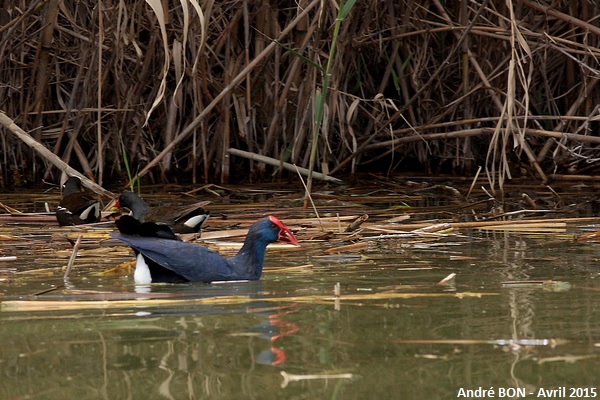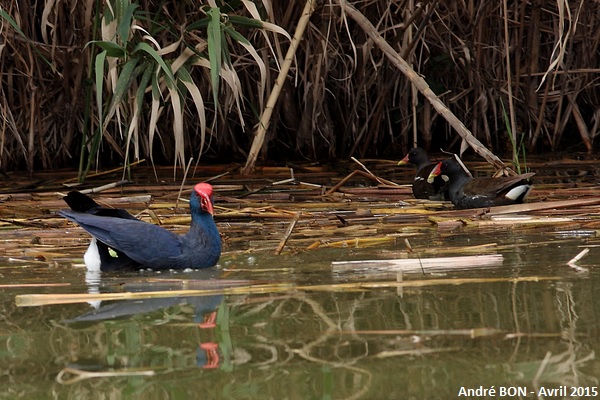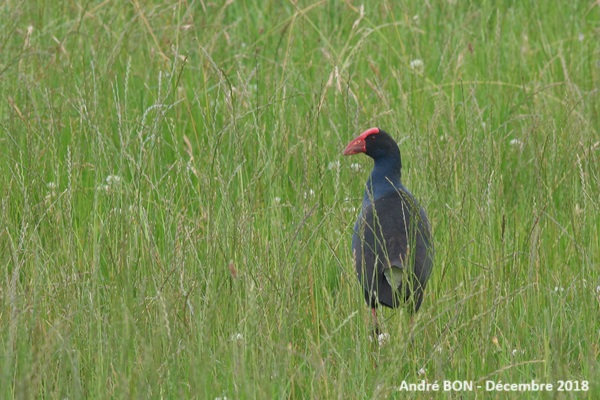


| Western Swamphen (Porphyrio porphyrio (Linnaeus, 1758)) |



|
|
Scientific name: Porphyrio porphyrio (Linnaeus, 1758) Common name: Western Swamphen Other names: Sultana bird French name: Talève sultane, Poule sultane. Order: Gruiformes Family: Rallidae Size: Body size: 38 to 50cm; Weight: 700 to 870g; Wingspan: 90 to 100cm. Habitat: Reed beds surrounding brackish or fresh water lagoons. Food: Aquatic or semi-aquatic plants. Western Swamphens lift plant debris with one foot (often the right one) to then grab it with the beak. Nesting: The nest is a small floating cup hidden among vegetation and having one or more access ramps. Females lay 2 to 7 eggs in April-May. Migration: Sedentary, they may make short moves depending on the level of water. Geographic area: South of Europe, Asia, Africa, Australia, New Zeeland. |
The Western Swamphen's plumage is a dark violet blue colour with a paler area, turquoise blue, on throat and chest. The underside of the tail is a pure white colour. The bill is red, triangular shaped, with the upper mandible slightly down curved and extending to a broad bright red frontal shield. The eyes are red. The legs are long and red. They end in long fingers with sharp lengthy claws. Juveniles are a duller and more greyish colour than adults. The underside of the body is a lighter colour. There are many subspecies depending on the geographical range. They show some variations in colour of plumage. |
| [To know more about the Western Swamphen] [Next picture] [Top] |

|
While in Valencia, we took the opportunity to go bird watching at the Albufera Natural Park with its large lake very close to the seaside. I have observed this Western Swamphen during a boat tour from El Palmar. I have not exactly focused on the bird and the autofocus of the camera adjusted to the vegetation in the background. |
| [To know more about the Western Swamphen] [Next picture] [Previous picture] [Top] |

|
Have you seen my beautiful bright red frontal shield? |
| [To know more about the Western Swamphen] [Previous picture] [Top] |

|
This subspecies of Western Swamphen is locally named Pukeko in Maori. Its introduction to New Zealand could have been made during the arrival of the first inhabitants about 1000 years ago. |